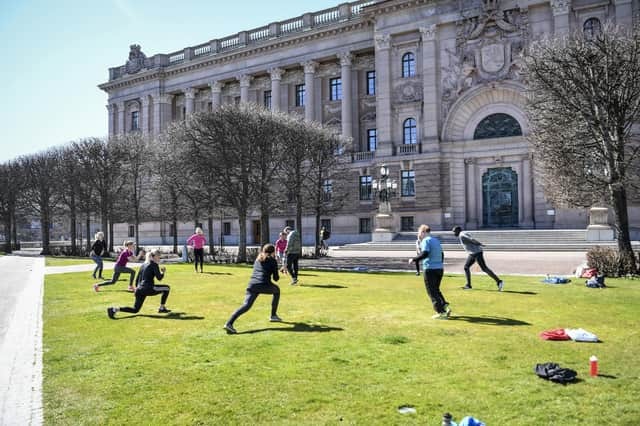Sweden has not see the predicted exponential rise in Covid-19 cases, and parts of Europe are beginning to follow its approach


It is now five weeks since Ireland ordered citizens to stay at home and business and schools to close, and four weeks since the UK government followed suit.
Sweden took a different approach, and while the variables in all countries are different, Sweden’s trajectory of Covid19 deaths per capita remains today as it has been throughout those weeks, at slightly above Ireland’s official toll, below UK and far below Belgium, Spain, Italy, and France.
Swedish figures include deaths in care homes.


Advertisement
Hide AdAdvertisement
Hide AdIt is too early to say what the least deadly measures to deal with this dreadful outbreak is, but we should recognise that Sweden has not seen the exponential infection rates predicted by many commentators, based on the Imperial College (London) model, by following an alternative path.
It is however noteworthy that lockdown is in itself a lazy term that provides little context to measures taken by other countries.
It is used to describe measures implemented in Finland (where business remain open but schools are closed) as well as in Wuhan district (where you could not even take your dog for a walk, so don’t ask what happened to pets).
China — in contradiction to the popular narrative — never implemented a national lockdown, only local ones.
Advertisement
Hide AdAdvertisement
Hide AdEarlier this year, I was able to go to shops, restaurants, and spas in a region of Japan that was under a ‘state of emergency’.
While we all are desperate to see results, we benefit most from keeping an open mind as to how effective various measures are, and, specifically, what factors contributes to controlling the outbreak.
Scientific advisors to the Swedish government argues that washing your hands, shielding the vulnerable, and adhering to safe social distancing measures (in that order) achieves the same trajectory of the outbreak as closing schools and the economy.
Altering long-term behaviours rather than ordering instant but difficult to maintain measures may not be the worst approach, and at the moment, some European neighbours are starting to follow the Swedish model; opening schools and small business, while maintaining restrictions on large gatherings and continuing social distancing measures.
Advertisement
Hide AdAdvertisement
Hide AdOnly time will tell, but that neither infection rate nor deaths have seen an exponential growth in Sweden in the last few weeks indicate that the way to control the spread of the outbreak may be more in the hands of private individuals, than in the scope of governments.
• Annika Nestius-Brown is a Swedish citizen living in London. She previously lived in Co Down for 20 years